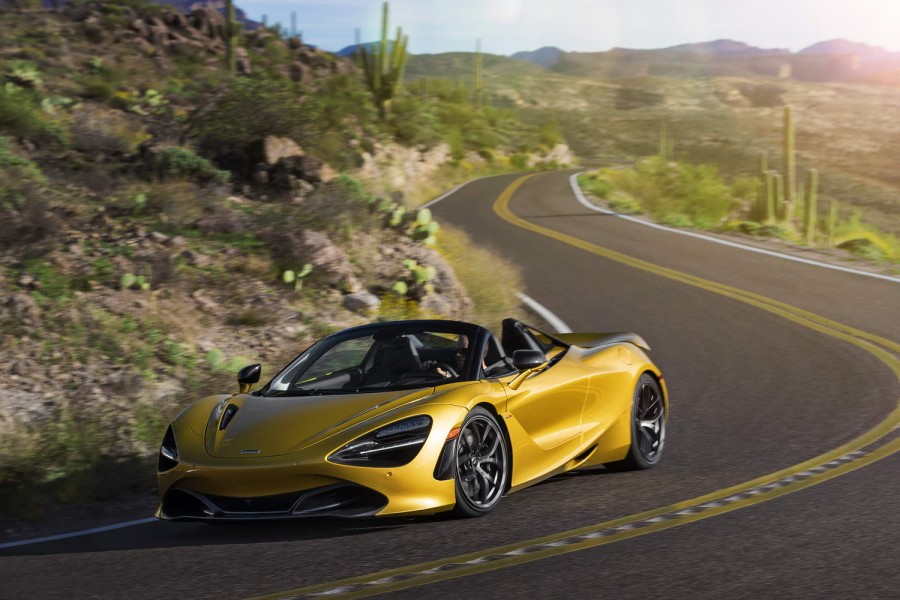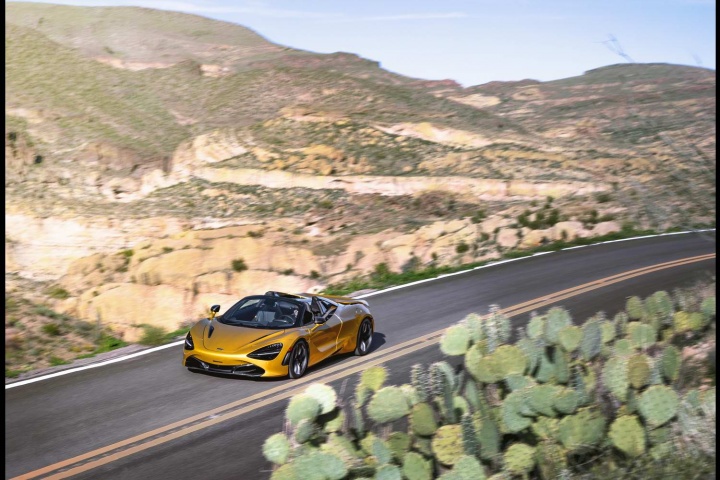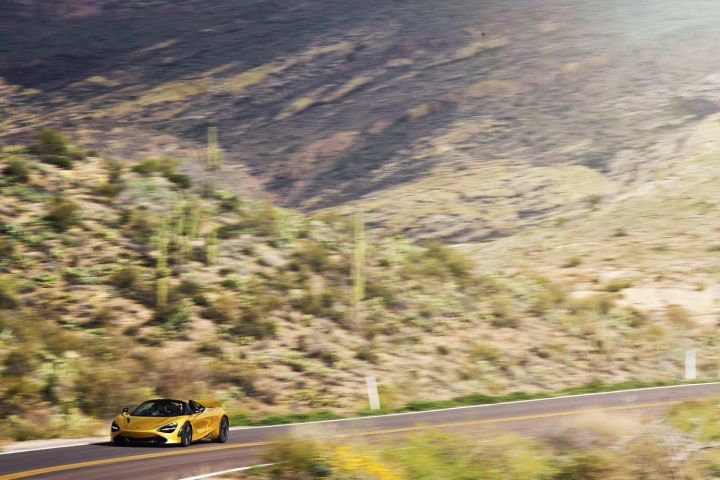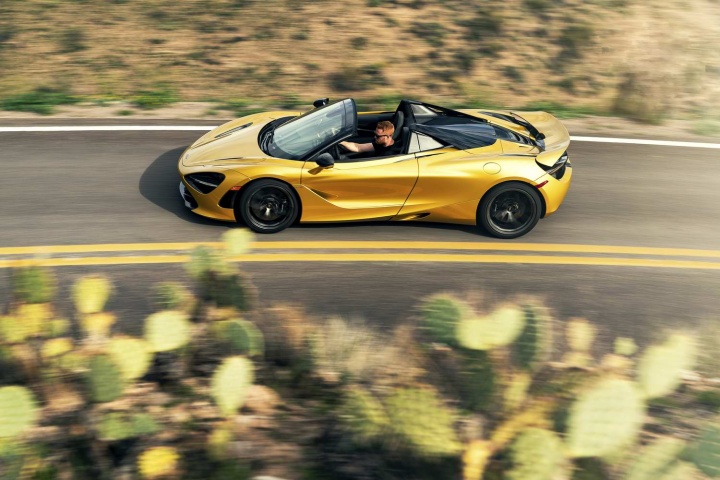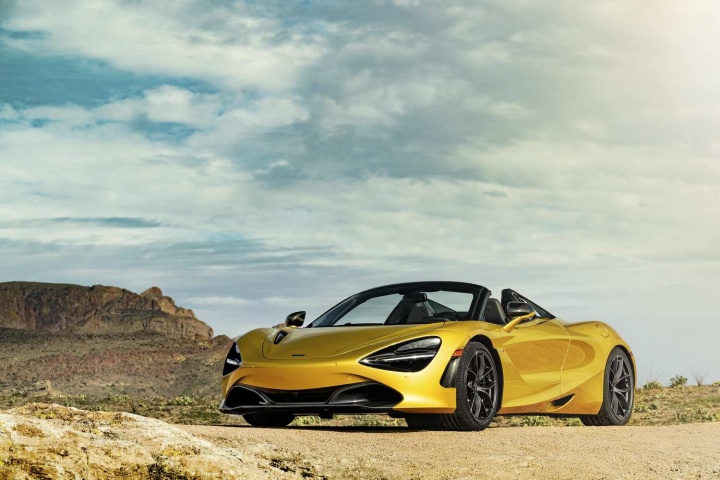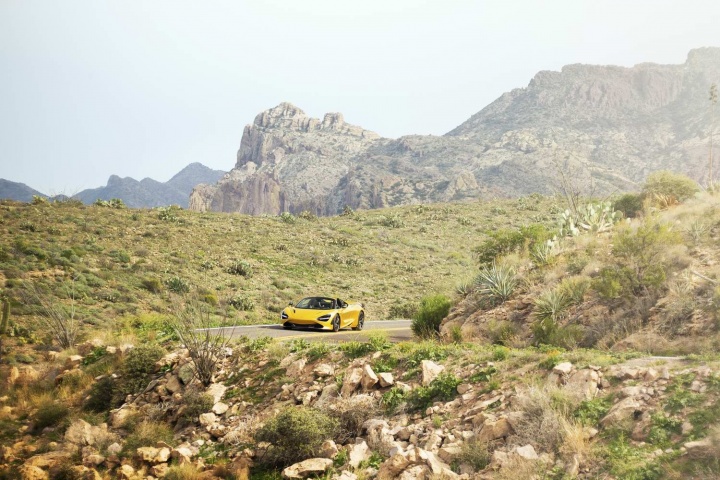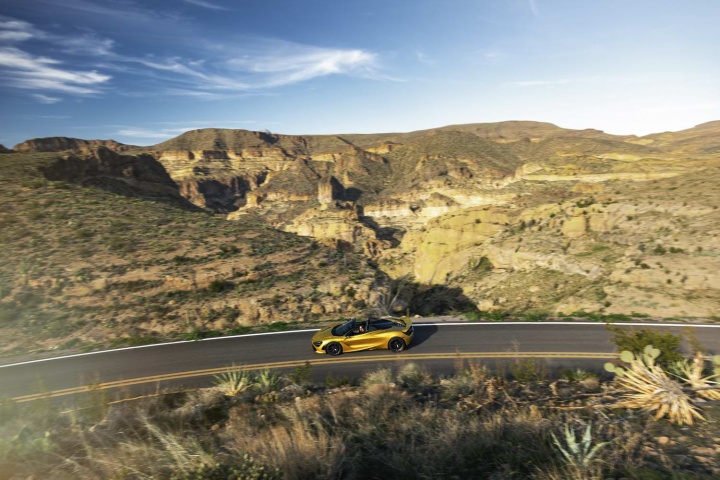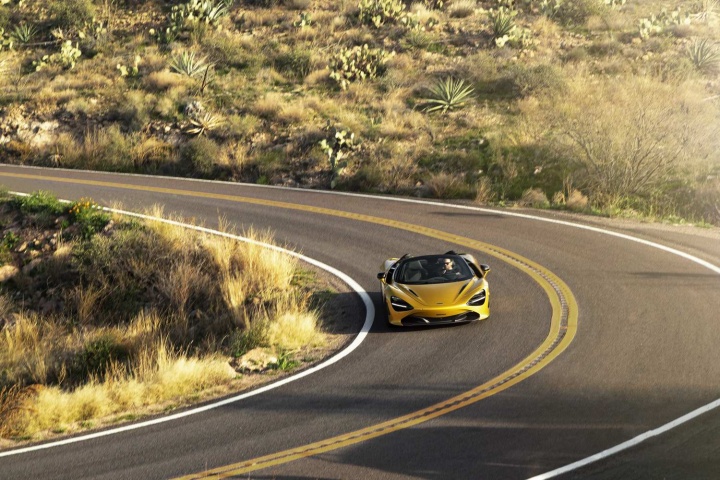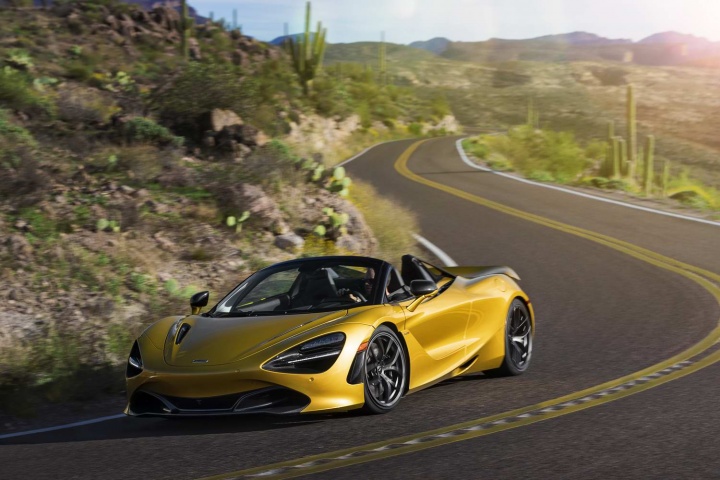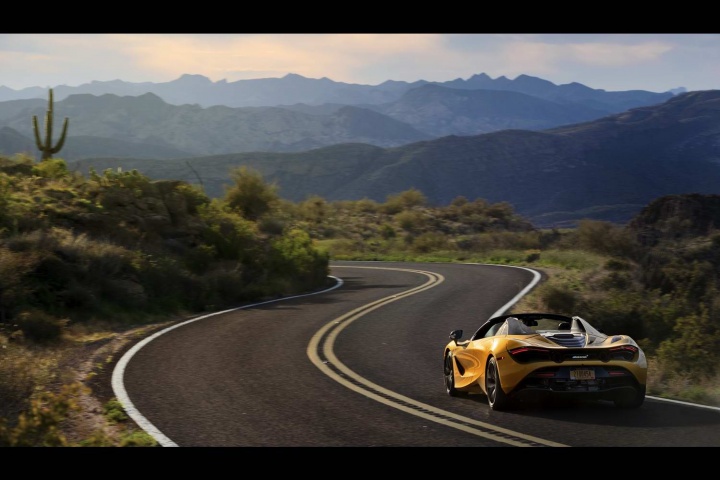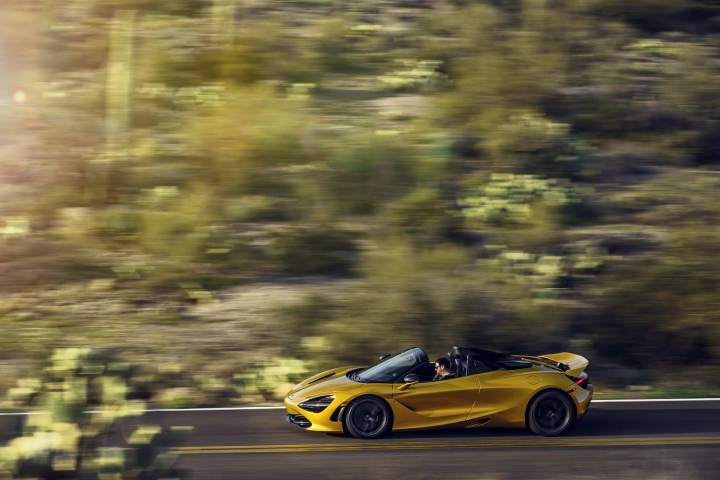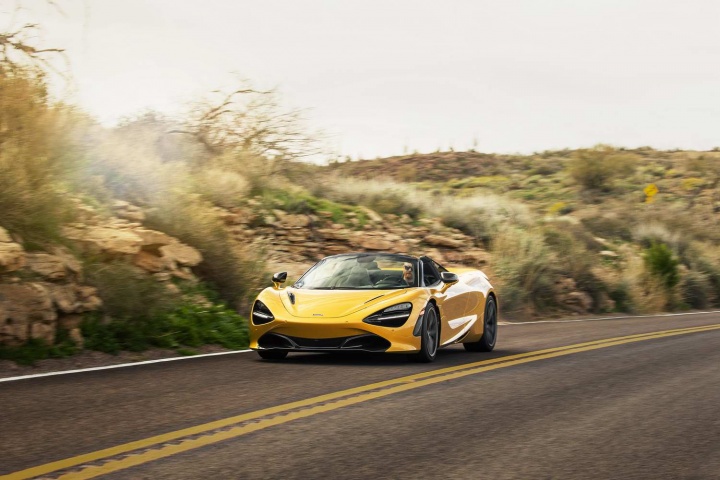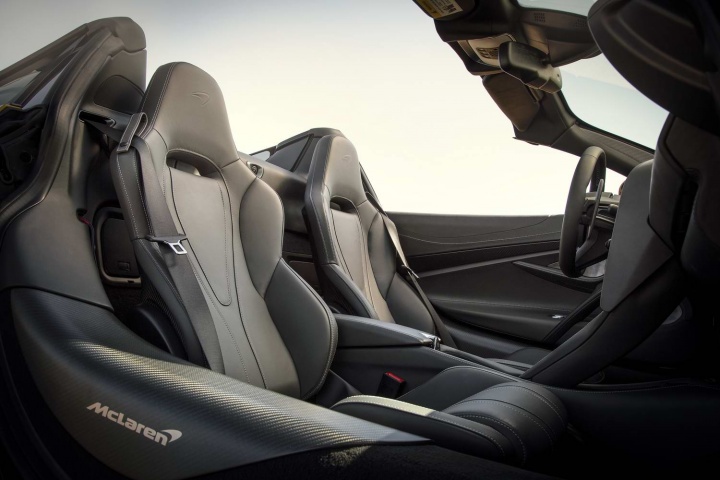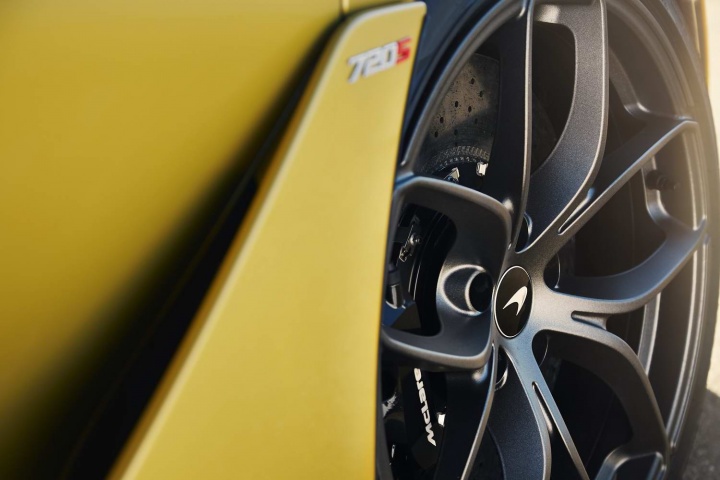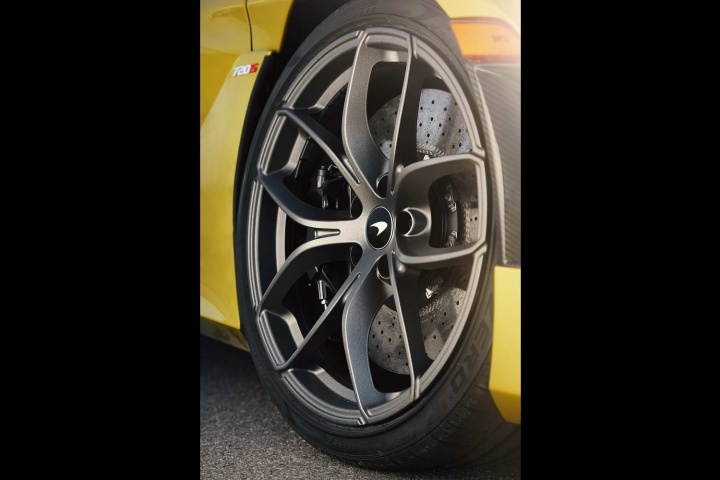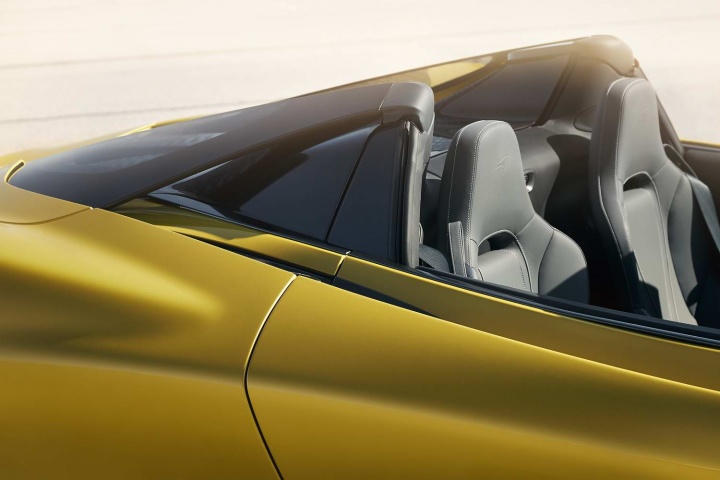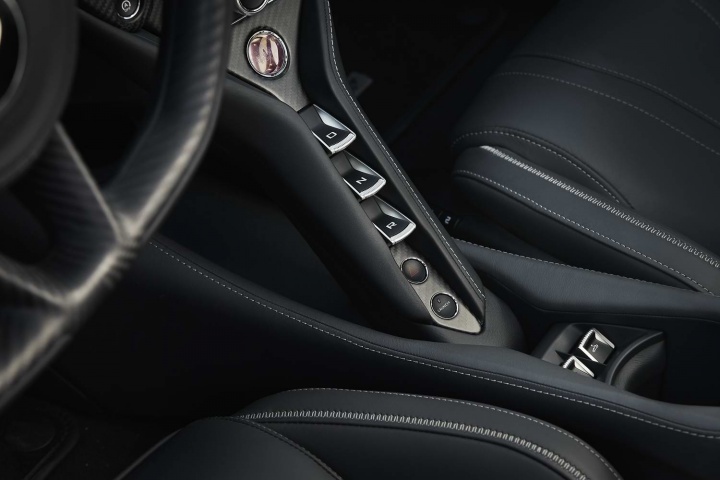This year, some 50 per cent of McLaren Automotive's production will be of open-topped cars, or Spiders. Hence, it's of no surprise that the excellent 720S coupe has been added to in the Super Series by the new 720S Spider. McLaren calls it a 'convertible supercar' and we've tested it.
In the metal
The fact that it's almost impossible to test drive a McLaren road car without making mention of its engineering reveals what a technology-lead company McLaren is. For many car manufacturers, the creation of an open-topped version of an existing model brings with it compromise. McLaren sought to minimise that in the creation of the new 720S Spider. So, while it is indeed heavier than the McLaren 720S Coupe, the increase is quoted as only 49kg. A new development (to accommodate the opening roof and the rollover protection system) of the carbon fibre structure that underpins all McLarens is responsible for keeping the weight increase down, so the gain is mainly due to the roof and its mechanism.
The roof itself (called an RHT - Retractable Hard Top - by McLaren) is of a patented design. As standard, the main panel is made of carbon fibre and, driven electrically, it folds away in just 11 seconds at speeds of up to 50km/h. It's notably quiet, too, adding to the sense of refinement and precise engineering. With the roof stowed away, the new rear 'flying buttresses' are brought into focus and, look closer at the pictures and you'll see that they're partially made of darkened glass. This significantly improves visibility, something that McLaren has always said is core to its second-generation Super Series cars.
That's not the end of the cleverness. Between those buttresses is a glass panel that can be manually raised or lowered, regardless of the roof position, cutting high-speed turbulence at one end of the scale, and allowing more of the exhaust note into the car at the other. Along with that, buyers can optionally replace the carbon roof panel with electrochromic glass, which switches from transparent to tinted at the touch of a button. It remembers its previous setting, and reverts to tinted when the car is parked up and turned off.
The rest of the Spider's cabin is virtually unchanged from that of the coupe, so it is spacious (for the sector) and exceedingly well made. Most things are controlled via the upright eight-inch touchscreen and the rest of the switchgear is perfectly damped. The interior is accessed by new frameless doors and hinges, making it easy to get in and out in a dignified fashion.
The exterior isn't very different to the coupe's either, in reality, save for the intricate sculpting of the rear deck and buttresses. The automatic rear spoiler is the same as in the coupe, too, though its movements are different depending on whether the roof is up or down. The Spider gets a new design of 10-spoke alloy wheels, shod in Pirelli P Zero tyres as standard, which can be upgraded to Pirelli P Zero Corsa for no extra cost. There are 23 paint colours to choose from, including the new Belize Blue and stunning Aztec Gold pictured here.
Driving it
Even if we did have a 720S coupe to hand and an endless supply of tyres, fuel and time with which to compare it back-to-back with the new McLaren 720S Spider, we reckon we'd come away none the wiser. Sure, very good drivers should be able to make the coupe lap a race track a little quicker, but mere mortals just won't be able to tell the difference, even in that environment. And let's face it: most supercars don't ever get taken to their limits on a race circuit.
So, the severely speed-limited roads of Arizona in the USA isn't as bizarre a location in which to launch the 720S Spider as it might first seem. Admittedly, we barely scratched the surface of the car's ability in terms of high-speed cornering and on-the-limit behaviour, but for every one supercar buyer that cares about such things, we reckon there's a hundred more that don't. Previous experience in the 720S coupe confirms that it's a sensational piece of kit, marrying real-world usability with the capability to put in some very senior lap times at some very senior race tracks. We have no doubt that the Spider could do that too.
But what the Spider does particularly well is turn every journey into an occasion, even one on slow roads. It starts with the opening of the new doors and sliding into the supportive seats. The driving controls are perfectly placed and exquisitely-weighted. While there's no slack in the steering or pedals, neither does the 720S Spider feel like it's on a knife's edge, goading you to drive quicker. The dual-clutch gearbox makes it a cinch to drive around in slow traffic and while the twin-turbo V8 out back may not be the most sonorous in such situations, it still rumbles with promise.
Leave urban confines behind and clear that V8's throat and you'll wonder if McLaren is under-quoting its power and torque figures. This is a sensationally fast car and it takes the merest flex of your right foot to summon up full performance and hit those posted speed limits. Perhaps more impressively, it does this in a refined manner, with no driveline shunt and no histrionics from the engine or transmission. It just goes. Very quickly indeed. The engine sounds far more interesting higher up the rev band, too, which means you're likely to hold a lower gear regularly, just for the sake of it. And down-change far more often than you need to. It's just that kind of car.
All the while, you get a great view out and closer access to the variety of noises coming from the back of the car than is possible in the 720S coupe. What's not to like?
What you get for your money
Befitting its supercar billing, the McLaren 720S Spider comes at a supercar price... At the time of writing, it would cost the guts of €440,000 to import and register a standard example of the new Spider in Ireland. Ouch. Few will be completely standard, even though it's generously equipped. McLaren offers two additional variants - called Performance and Luxury - allowing buyers to mould the car to their liking even further. Regardless, while such a cost is affordable by only a lucky few, they won't see the Spider as poor value for money.
Summary
While some will scoff at the idea of a convertible supercar, it takes very little time behind the wheel of the gorgeous new McLaren 720S Spider to realise that the British company has developed a thoroughly well-engineered transformation from the already accomplished coupe. The compromises are few and far between, while giving the 720S an extra dimension and, for some markets, more appeal. Unless you plan on taking your supercar on track regularly and you care about thousandths of a second around a lap, the Spider is the choice of the current Super Series.

